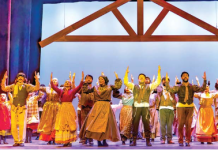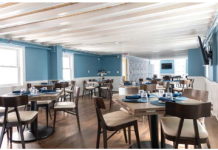By Charles B. Rubinstein
In the mirrorlike relationship between wine and human beings,
Zinfandel owned more reflective properties than any other grape…
As a result, its own “true” nature might never be known.
David Darlington, Angels Visits: An Inquiry into the Mystery of Zinfandel
Zinfandel, known as the quintessential American grape, has traveled many roads in many guises.
For a long time its history was a tangle of incorrect information, starting with Edward Bosqui’s folio Grapes and Grape Vines of California, published in 1877. The beautiful color prints of 10 grape varietals in the folio are accompanied by descriptions written by the California State Vinicultural Association. Col. Agoston Haraszthy, who brought many grapevine cuttings from Europe to California in the mid-1800s, was mistakenly given credit in the folio for bringing zinfandel to California from Europe.
Charles Sullivan set the record straight in 2003 in his book Zinfandel, A History of the Grape and its Wine. As Sullivan described in his book, zinfandel really came to California in 1852 from the East Coast of the United States, where it was grown as a table grape in hothouses.
The East Coast vines originally came from the Austrian imperial nursery collection in Vienna, but the grape’s lineage was unknown. That problem was solved by Dr. Carole Meredith, a retired professor at the University of California, Davis. She is an acknowledged expert in DNA profiling of grapevines. To make a long story short, Meredith determined that primitivo, an Italian grape, was genetically equivalent to zinfandel and that plavac mali, a Croatian grape, had a strong family resemblance to zinfandel. Further DNA testing showed that zinfandel was an exact match to Crljenak Kastelanski (CK), a Croatian grape with a name that doesn’t trip easily on the tongue. Meredith concluded that Croatia is the origin of zinfandel and also of primitivo.
Zinfandel’s wine styles also have been difficult to pin down because it has been somewhat of a chameleon in its home state of California. According to wine journalist Rod Byers, zinfandel can be described as “the Oakland Raiders of wine: loud, proud, unruly, and unapologetic.” Joel Peterson of Ravenswood Winery fame says, “I like zin because it’s a tough old bird. Treat it with the respect it deserves, and it soars.” Back in the 1970s and 1980s zinfandel was bursting with red fruit flavors. In some cases it was an elegant wine in the claret mold. Those wine lovers who are only familiar with the blockbuster zins of the 1990s would find the previous description unbelievable.
The 1990s were when high alcohol, in the 16 to 17 percent range, and residual sugar became the hallmarks of zinfandel.
Those wine drinkers who favored the zinfandel wines of the 1970s and 1980s became disenchanted in the 1990s, but that’s not to say that the alcoholic fruit bombs of the 1990s didn’t find their partisans. However, the pendulum of styles has swung the other way for zinfandel in the last few years. Elegance and balance have returned. That’s not to say that high alcohol has disappeared. Sometimes it seems to have blended in so it’s not obtrusive.
Turley makes some high alcohol zinfandels (16 percent or so) but they succeed. At their best they are surprisingly soft. High alcohol per se is not necessarily bad if the winemaker knows how to handle it. Part of the problem is that zinfandel will ripen easily in a hot climate, which will lead to zinfandel wines in the 14 to 15 percent alcohol range. That level of alcohol does not preclude making an elegant wine in a claret style.
The difficulty for the consumer is learning which zinfandels to look for if balance and elegance is desired. Dashe, Nalle, Ridge, Ravenswood, Sky and Turley, among others, are producers to look for if you want to avoid blockbusters. However, that’s not to say that every zinfandel that these wineries produce is in the balanced, elegant and well-structured category. Finding the happy medium when shopping for zinfandel is not an easy task. One clue is to stay below 15 percent alcohol.
I would be remiss if I didn’t mention Old Vine Zinfandel. There is no legal definition of the term, but I would place vines that are more than 50 years old in this category. Sonoma County has a small treasure trove of these vines. Some are even older than 100 years. The phrase is usually on the label of zinfandels made by producers from old vines. Many are in the balanced and elegant category. Wines in this category are food friendly.
Pick of the Bunch
Highly Recommended
2010 Ridge Zinfandel Ponzo, Russian River Valley ($25)
2010 Turley Zinfandel Duarte Vineyard, Contra Costa ($50)
2010 Turley Zinfandel Pesenti Vineyard, Paso Robles ($50)
Recommended
2010 Rancho Zabaco Zinfandel Heritage Vines, Sonoma County ($14)
2010 Dashe Cellars Zinfandel, Dry Creek Valley ($20)
2010 Seghesio Family Vineyards Zinfandel, Sonoma County ($22)
If you have questions or comments about wine write to me at The Two River Times™ or email me at trtwineman@aol.com.














